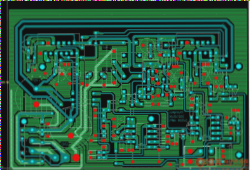Flux Coating System
The flux coating system plays a crucial role in applying flux to the PCB board before soldering. It comprises a flux reservoir, a flux flow control pump, and a flux distribution nozzle. Various methods such as foaming agents and sprays are used to ensure even flux distribution.
Preheating System
Preheating is essential to bring the PCB and components to the correct temperature before entering the wave soldering process. Infrared heaters or hot air convection systems are commonly used to achieve uniform heating, ensuring the activation of flux and the removal of oxide layers for reliable soldering.
Welding System
At the core of wave soldering is the welding system, which includes a wave soldering machine generating a molten solder wave. The PCB passes over this wave, effectively soldering the components onto the board. Modern machines may feature double outlets for more precise soldering and improved joint reliability.
Electrical and Mechanical Structure System
The electrical and mechanical structure system encompasses the components that control the entire wave soldering machine. It is responsible for maintaining conveyor speed, controlling wave height and temperature, and ensuring machine stability during operation. High-performance machines offer precise temperature control, quantitative settings for various parameters, and auxiliary stations to support the welding system.
Composition Principle of Wave Soldering
Modern wave soldering machines adopt a T-wave shape to provide sufficient welding time and reduce bridging. Additional features such as hot air knives and cooling fans help improve solder joint quality and reduce thermal stress on components. Various waveforms like the λ wave, Ω wave, and bubble tin wave have been used in the past, each with its unique advantages and limitations.


